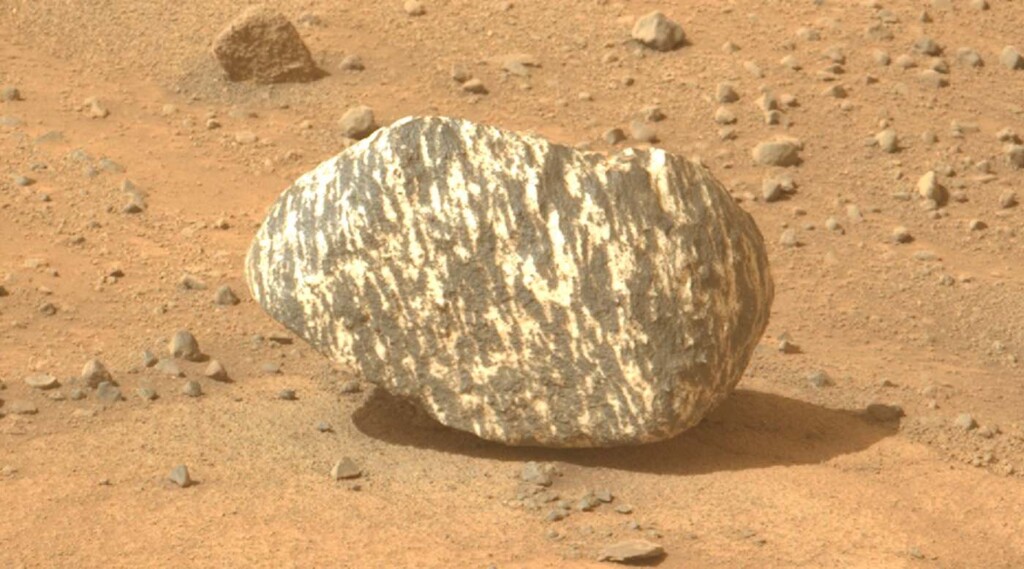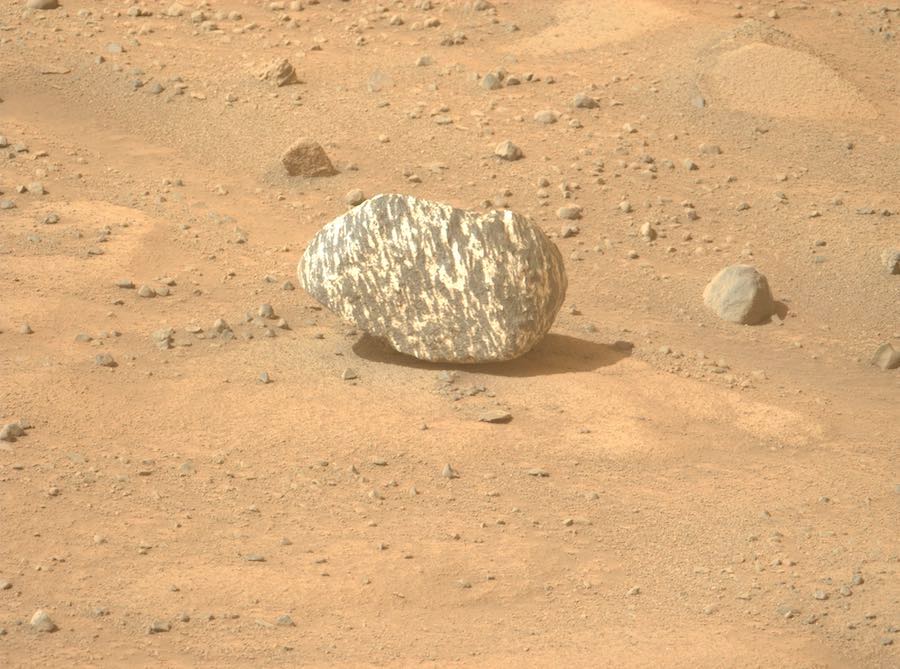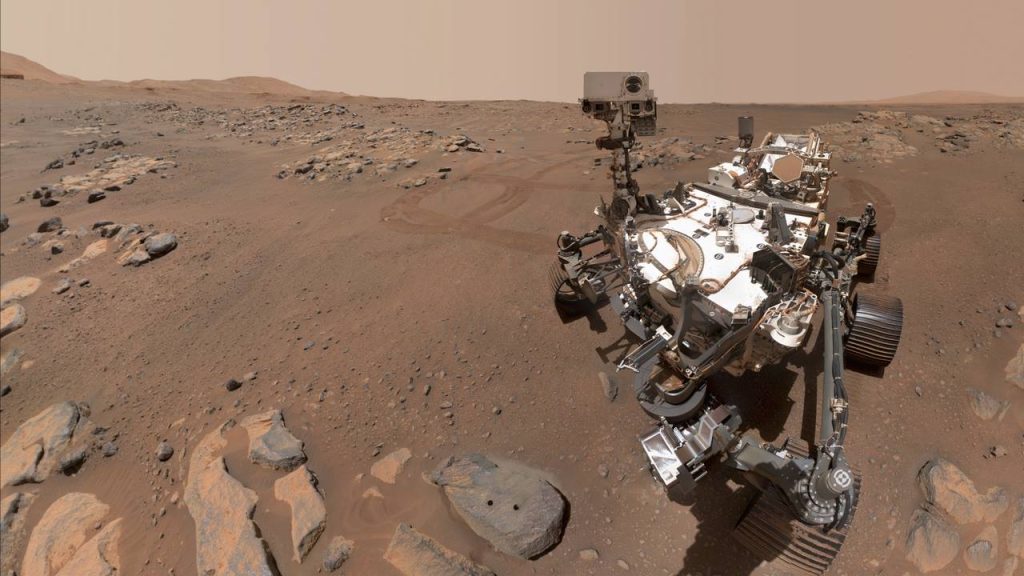Strange Rock Found on Mars with Zebra Markings Has NASA Scientists ‘Excited’

Last month, while trundling across the Martian landscape, the eyes of the Perseverance Mars rover settled on an extraordinary rock.
Featuring black and white striations like Alpine granite, it has NASA scientists excited that the rover is entering an area where new discoveries about the planet can be made.

Sighting it with the Mastcam-Z, NASA’s Jet Propulsion Laboratory which controls the rover took a closer look after identifying the rock which looked entirely out of place.
Currently ascending the vast Jezero Crater in which it landed, the rover has recently found a spot of flat ground allowing it to travel more freely. Having already collected samples of ancient river sediments, it’s now climbing to higher elevations in search of ancient rocks.
In June, while traversing Mount Washburn, Perseverance found a sparkly white boulder of feldspar and pyroxene not too dissimilar to this white rock, which measured approximately half the size.
Nicknamed Freya Castle, Perseverance posted up next to it for a spectrographic examination.
“The internet immediately lit up with speculation about what this ‘zebra rock’ might be, and we’ve enjoyed reading your theories!” Athanasios Klidaras, a Ph.D. student at Purdue University working with the Perseverance mission team, told Earth.com.
Recalling Geology 101, we hopefully remember that rock is formed in three ways. Sedimentary rock is formed as layers of soil and organic matter are buried and compacted over millions of years. Igneous rock is formed when magma emerges from the Earth’s crust in the form of lava, which then cools, and solidifies.
It’s sometimes said that metamorphic rock, which forms stones used for building like granite, gneiss, and slate, is “baked.” It’s formed when certain mineral compositions are joined under intense heat and pressures under the Earth.

MEET THE RED PLANET: NASA Summarizes What New Mars Rover has Found as it Finishes it’s Mission at Just Over 1,000 Days
Freya Castle is believed to be a metamorphic rock, which if true could give more detailed information about Mars’ volcanic past. Jezero Crater is mostly Martian bedrock and sedimentary layers, meaning that Freya Castle tumbled down into the crater from higher up.
OTHER ROVER DISCOVERIES: NASA Stunned by Discovery After Mars Rover Breaks Open a Rock
Klidaras and his colleagues have said they are keeping the rover’s eyes out for a larger deposition of this rock. Such a collection might shed light on whether the stones were uplifted from the crust during the Jezero impact event, or if they were transported to the area from some significant volcanic event millions of years ago.
SHARE This Bit Of Scientific Discovery with Your Friends…
>read more at © GoodNews
Views: 2